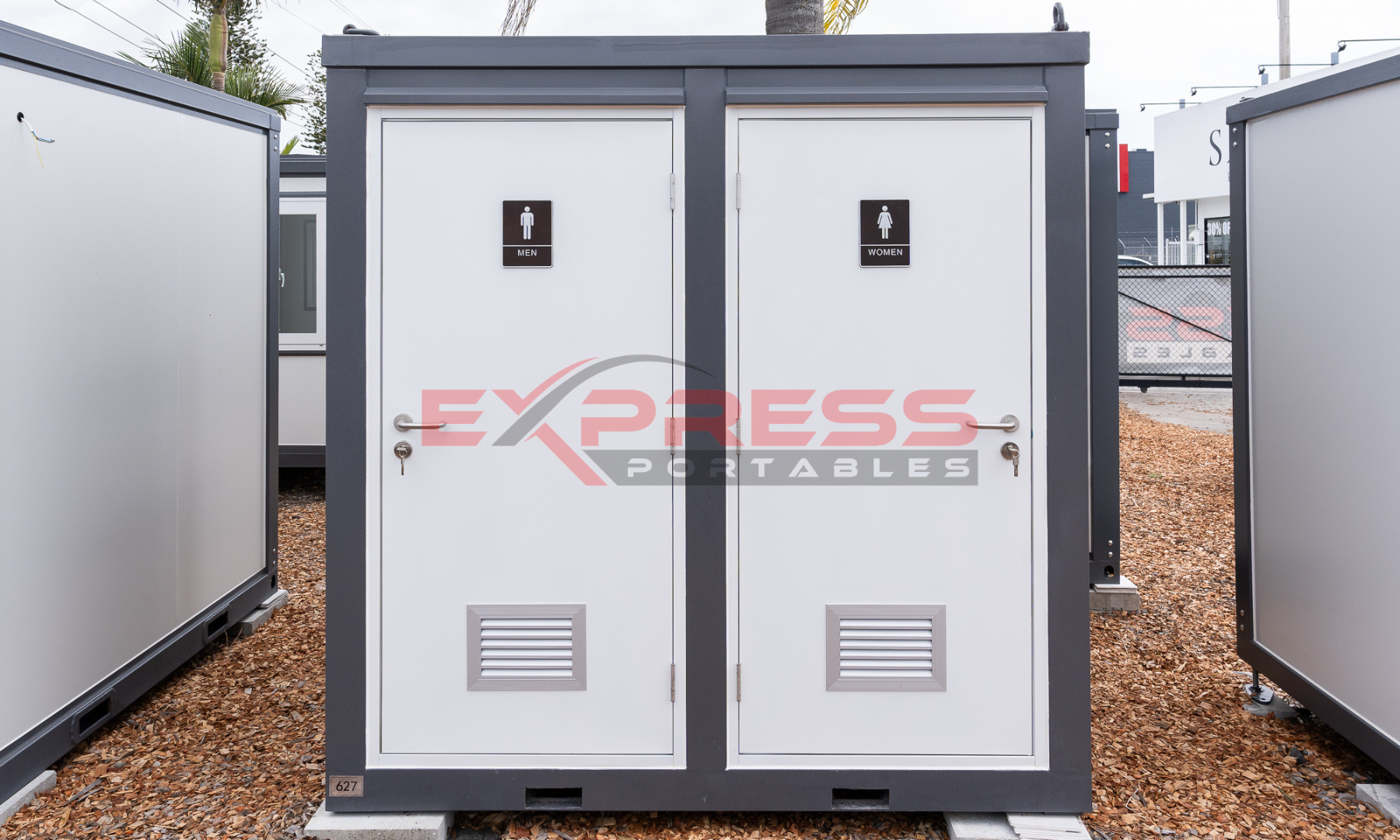Portable toilets are an essential part of outdoor events, construction sites, remote locations, and temporary living spaces. While they may seem simple on the surface, a lot goes on behind the scenes to ensure they remain hygienic, odour-free, and user-friendly. So, how do portable toilets work? In this blog, we break down the inner workings of portable toilets and why they’re an efficient and convenient solution for sanitation on the go.
1. The Basic Components of a Portable Toilet
At their core, most standard portable toilets are self-contained units that consist of:
- A toilet bowl with a seat
- A holding tank beneath the bowl
- A non-flush or foot-pump flushing system
- A ventilation pipe to control odours
- A hand sanitiser dispenser or handwashing station
These components are housed in a lightweight but durable structure made from high-density polyethylene, which is UV-resistant and easy to clean. Some higher-end models also include features like lighting, mirrors, and sinks with running water.
Express Portables also offers plumbed portable toilet units that are compatible with mains water and sewerage connections. These units are ideal for sites where a longer-term or more comfortable solution is needed, offering the functionality of a regular bathroom in a relocatable format.
2. How Waste Is Collected and Stored
Waste from a portable toilet is collected directly into the holding tank positioned beneath the seat. These tanks typically have a chemical solution that breaks down waste and reduces odour and bacteria. The chemicals include biocides to kill germs, dyes to mask waste visibility, and fragrances to control smell.
The waste is contained in a sealed environment, and the tank is engineered to prevent leakage or backflow. In standard units, the waste is not flushed away—it’s simply covered by a flap to isolate it from the bowl and user.
For plumbed options, like those available at Express Portables, waste is flushed directly into a connected waste line, similar to a traditional bathroom. These models provide a higher standard of sanitation and reduce the need for regular waste pumping.
3. Flushing and Cleaning Mechanisms
While some portable toilets are non-flushing, many newer models come equipped with hand or foot pumps that flush a small amount of water and chemical solution into the bowl. This provides a more hygienic and pleasant experience.
For units with sinks, water is typically stored in a separate freshwater tank and operated by a manual pump. After use, wastewater is stored in a greywater tank for later disposal.
Express Portables also supplies models with full plumbing compatibility, allowing them to be connected directly to site water and drainage. These units offer push-button flushing, running water taps, and proper waste outflow for enhanced hygiene and comfort.
To maintain cleanliness, professional servicing is required regularly. The servicing includes:
- Pumping out waste from the holding tank (if not plumbed)
- Refilling chemical and water tanks
- Scrubbing and disinfecting the interior
- Inspecting for any damages or odour issues

4. What Makes a Good Portable Toilet?
A high-quality portable toilet should be easy to transport, safe to use, and built for comfort. At Express Portables, our portable toilet and bathroom units are designed with practical features like full ventilation, LED lighting, modern interiors, and optional solar setups.
We also offer plumbed bathroom solutions that provide flushing toilets, showers, and full plumbing functionality—ideal for semi-permanent setups or events requiring a more premium feel. These units combine the ease of mobility with the comfort of traditional amenities.

5. Wheelchair Accessible Portable Toilets
Accessibility is an important consideration for public events, construction sites, and inclusive spaces. Express Portables offers wheelchair accessible portable toilets designed with extra space, ramp access, handrails, and compliant layout dimensions to meet accessibility standards.
These units provide ample interior room for wheelchair manoeuvrability, lower basin and toilet heights, and non-slip flooring to ensure safe, dignified use for all individuals. They're an essential feature for ensuring equal access and comfort at your site or event.
6. Eco-Friendly Advancements
Modern portable toilets are becoming more eco-conscious with features like:
- Waterless or composting models
- Biodegradable chemicals
- Solar-powered lighting and ventilation
These innovations make portable toilets more sustainable, especially for long-term use in remote or environmentally sensitive areas. Plumbed units also help reduce chemical usage and waste disposal needs by utilising on-site services.
Conclusion
Portable toilets are more than just a temporary fix—they’re an essential, well-engineered solution to mobile sanitation. Understanding how they work helps you choose the right unit for your needs and ensures proper care and usage.
👉 Browse our range of portable toilets and plumbed bathroom units or get in touch with our team to find the best solution for your next event or job site.
